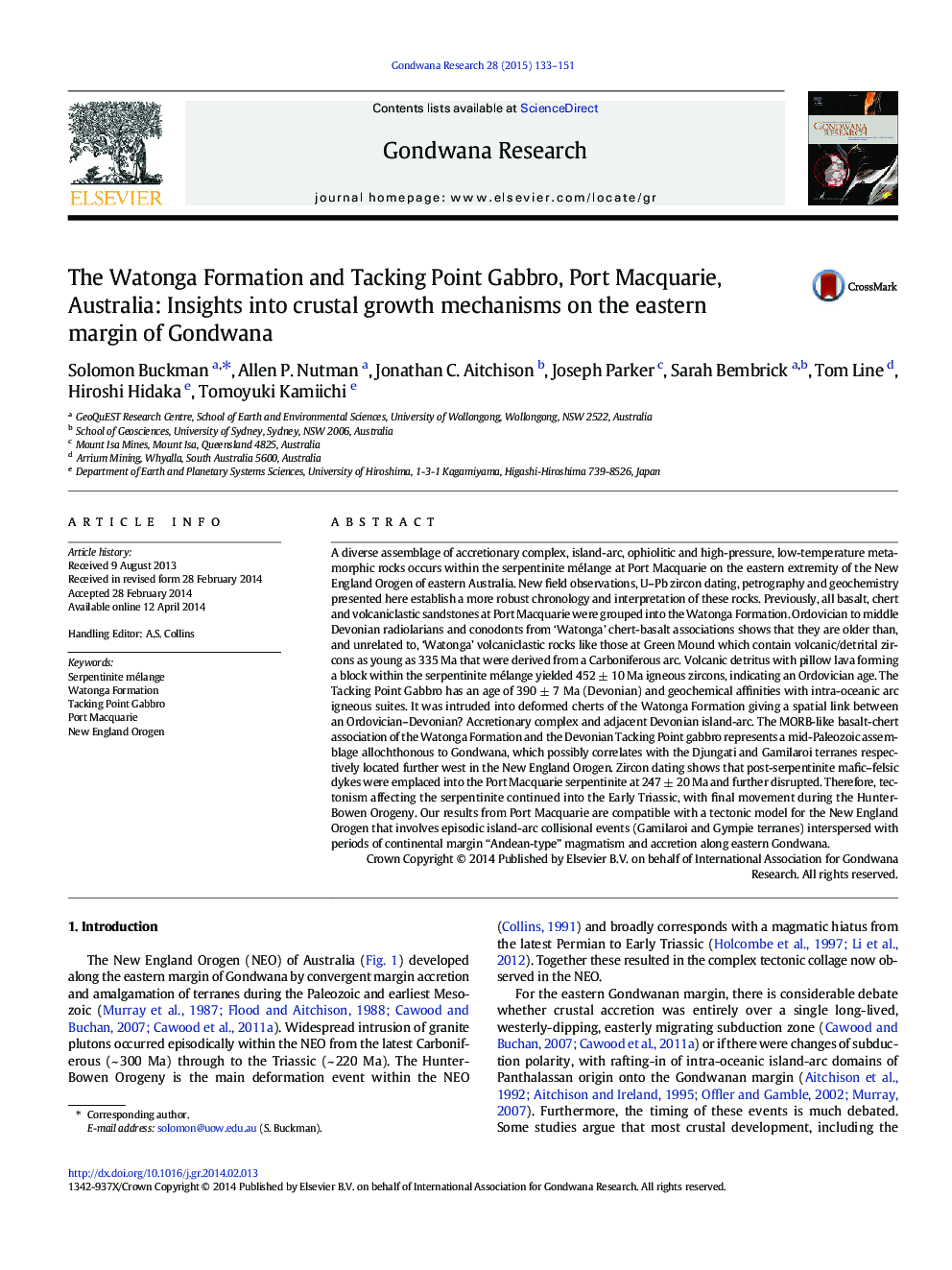| Article ID | Journal | Published Year | Pages | File Type |
|---|---|---|---|---|
| 4726800 | Gondwana Research | 2015 | 19 Pages |
•Tacking Point Gabbro is Devonian not Permian and Watonga Formation is Ordovician.•Sandstone at Green Mound is Carboniferous and not part of the Watonga Formation.•Dykes cutting the serpentinite are ~ 250 Ma constraining the age of the mélange.
A diverse assemblage of accretionary complex, island-arc, ophiolitic and high-pressure, low-temperature metamorphic rocks occurs within the serpentinite mélange at Port Macquarie on the eastern extremity of the New England Orogen of eastern Australia. New field observations, U–Pb zircon dating, petrography and geochemistry presented here establish a more robust chronology and interpretation of these rocks. Previously, all basalt, chert and volcaniclastic sandstones at Port Macquarie were grouped into the Watonga Formation. Ordovician to middle Devonian radiolarians and conodonts from ‘Watonga’ chert-basalt associations shows that they are older than, and unrelated to, ‘Watonga’ volcaniclastic rocks like those at Green Mound which contain volcanic/detrital zircons as young as 335 Ma that were derived from a Carboniferous arc. Volcanic detritus with pillow lava forming a block within the serpentinite mélange yielded 452 ± 10 Ma igneous zircons, indicating an Ordovician age. The Tacking Point Gabbro has an age of 390 ± 7 Ma (Devonian) and geochemical affinities with intra-oceanic arc igneous suites. It was intruded into deformed cherts of the Watonga Formation giving a spatial link between an Ordovician–Devonian? Accretionary complex and adjacent Devonian island-arc. The MORB-like basalt-chert association of the Watonga Formation and the Devonian Tacking Point gabbro represents a mid-Paleozoic assemblage allochthonous to Gondwana, which possibly correlates with the Djungati and Gamilaroi terranes respectively located further west in the New England Orogen. Zircon dating shows that post-serpentinite mafic–felsic dykes were emplaced into the Port Macquarie serpentinite at 247 ± 20 Ma and further disrupted. Therefore, tectonism affecting the serpentinite continued into the Early Triassic, with final movement during the Hunter-Bowen Orogeny. Our results from Port Macquarie are compatible with a tectonic model for the New England Orogen that involves episodic island-arc collisional events (Gamilaroi and Gympie terranes) interspersed with periods of continental margin “Andean-type” magmatism and accretion along eastern Gondwana.
Graphical abstractFigure optionsDownload full-size imageDownload as PowerPoint slide
